How the Sales Cycle and Seasonality Impact Facebook Performance [Hint it takes more than Facebook data]
Written by: Gabriel Solberg Read time 11 minutes
Understanding the Sales Cycle and seasonal trends can explain performance anomalies when every optimization trick has been exhausted.
Have you found yourself second guessing your Facebook marketing abilities? Don’t worry it happens to the best of us.
Before we take a closer look at how the Sales Cycle and seasonality affect Facebook campaigns let’s take a closer look at the Sales Cycle in general 👇
What is a Sales Cycle?
A Sales Cycle consists of the steps (touch points) that lead to the first purchase. This includes both first time and future repeat purchases.
The Sales Cycle does not end after the customer has been acquired.
It continues for the lifetime of that customer.
Some of these touch points include marketing, sales, customer service, product quality and user experience.
Note:
A Sales Cycle will vary by industry. Therefore, you need to contextualize the Sales Cycle to your product category or service.
Some example variables to consider are:
- Are you selling a service or a product?
- Is the product a high ticket item (long consideration period)?
- Are you selling a consumable product with lower average order values that has a higher repeat purchase rate?
In this post, we are going to focus on the CPG (consumer packaged goods category), and explore how the sales cycle and seasonality affects Facebook campaign performance.
Before we dive in let’s first take a look at how marketing fits into the Sales Cycle.
Where does marketing fit into the Sales Cycle?
Marketing can assist in nurturing leads and closing sales. It’s efficacy depends on who, how, what, when and where the consumer is reached.
For example:
You run a Facebook prospecting campaign to a cold audience based on expressed interests in your product type or category.
For example, people that have an affinity to fitness will likely be interested in your fitness supplement.
As the first interaction you are building awareness of your brand and product. The goal is to create awareness and drive interest.
Note:
Given that this example falls under the consumer goods category you are not selling high ticket items. This typically translates to a shorter consideration phase which requires less nurturing.
With good creative the user explores your product multiple times and decides to make a first time purchase.
Once purchased you know that your customers take about 14 days to consume your product.
To keep your brand top of mind and avoid a competitor stealing your customer you might continue to nurture your customer as they consume your product.

This can be done by connecting them with helpful, useful and engaging content throughout the 14 days.
As the customer gets closer to the lapse point, they prepare for their next purchase. Hopefully the customer enjoyed your product and wants to come back to buy again. This will turn them into a repeat customer.
If they do not come back and buy again in the given time frame, the user’s active status will switch to at risk. In other words, if they don’t purchase from you soon there is a good chance they will never purchase from you again.
At this stage you will want to start reaching out to the customer with incentivized messaging.
For example, via Facebook ads, search ads, email, chat, sms or direct mail.
Until the user either purchases again or becomes a lost customer.
Keep the sales cycle turning.
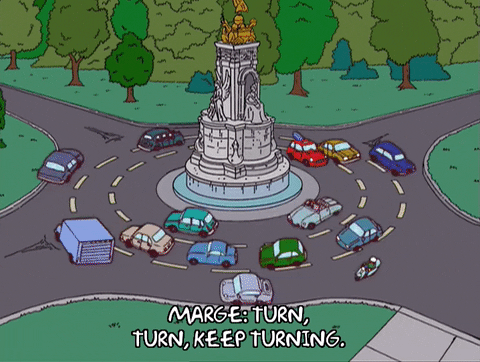
Ok so what is a Sales Cycle process for Facebook Marketing?
Facebook marketing is one of many pieces that contribute to a Sales Cycle process.
If we simplify the user journey we end up with five basic steps of a Sales Cycle:
– Prospecting
– Consideration
– Incentivization
– Mind Share
– Retention
Let’s look at each one a little closer.
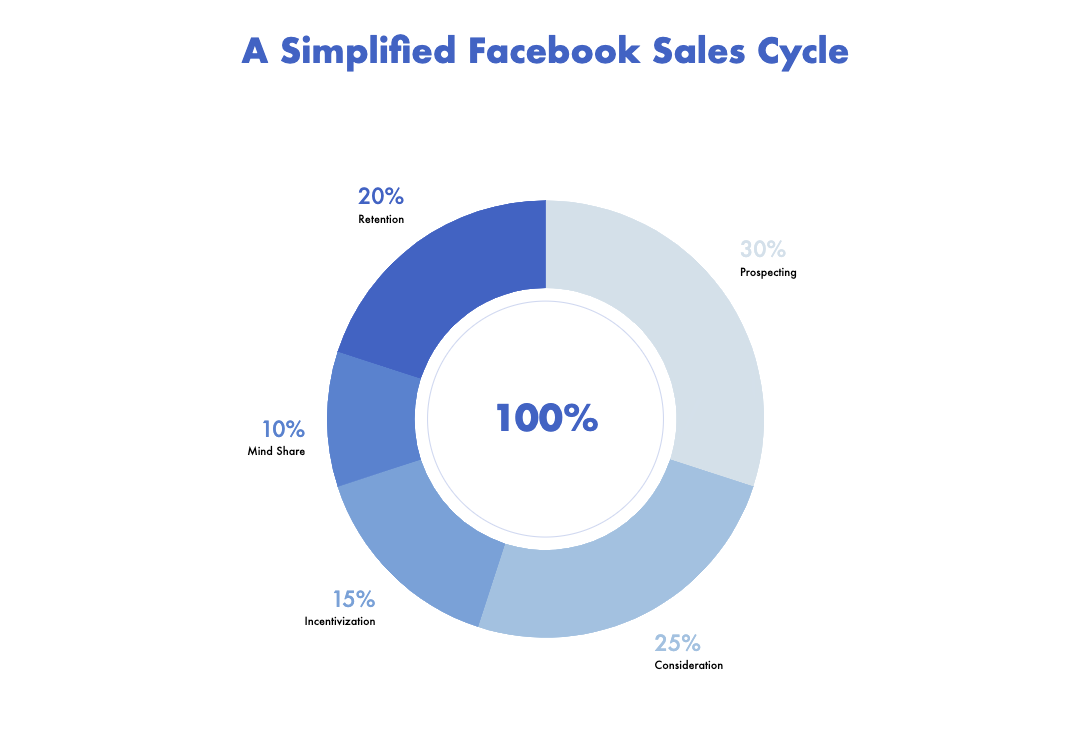
Graph built for free with Adobe Spark
1. Prospecting
People need to know that your brand and product exist.
In this stage you have the opportunity to introduce your product and its benefits.
Consider this for you Facebook Ad creative and copy:
Generate Curiosity | Create Interest | Highlight Value | Leverage Social Proof
2. Consideration
Prospects know who you are, great!
Now what?
If they haven’t purchased , keep nurturing.
Leverage digital signals and touch points to reach interested prospects.
Don’t forget about the power of social proof!
Re-emphasize product benefits and give a compelling reason as to how your product can change and improve their life.
Consider this for your Facebook Ad creative and copy:
Highlight Life Improvement | Leverage Testimonials | Trigger loss aversion
Build custom Facebook audiences to leverage people reached in the Prospecting step:
Retarget Engagers (video views, Add to carts)
Note 1:
Facebook audiences are not perfect. You will have an overlap of prospecting and consideration (cold and warm) audiences on Facebook. Reduce overlap by excluding custom audiences from your Top of Funnel campaigns.
Note 2:
Let’s contradict note 1. Sometimes automation wins. 😀 Test running ads with and without warm audience exclusions. You should always exclude captured leads or active customers. At the end of the day if running all of your ads for prospecting and consideration on top of funnel campaigns drives growth it is not necessarily beneficial to place hard exclusions on top of funnel campaigns. However if you find that sequenced creative produces stronger conversions exclude engaged users (warm leads based on touch points i.e. video views, add to cart…) from your prospecting campaigns and serve creative directly targeted at warm leads.
3. Incentivization
Incentivize the first Purchase.
This step of the Sales Cycle is for users that need a little nudge to get them over the finish line. They have been introduced to your brand and product and have continued to engage with marketing initiatives. However, they have not yet moved out of the consideration phase. This does not mean there is no interest or need.
Life gets busy, people get distracted, there is no immediate need. To push the procrastinators over the finish line you can incentivize them with a discount or sale. Urgency also works well here by setting a clear end date for the sale. You can reach these users via advertising digital or print (i.e. direct mail) or email marketing if you have captured their email at one of the steps above.
4. Mind Share
Now that the consumer has purchased you need to stay top of mind. The best way to do this? Create an amazing customer and product experience and establish trust.
From a strict marketing perspective you can offer helpful and informative (don’t take shortcuts here) content using both Facebook ads as well as leveraging a newsletter.
5. Retention
Sales and product launches are a great way to get repeat purchases. It’s always cheaper to sell to an existing customer then it is to a new prospect.
However, keep in mind that sales are not the best evergreen strategy since it can cheapen your brand and also teach consumers to only purchase when there is a sale.
So where can you reach customers in the most critical moments?
Identify Lapse Points
You can leverage Facebook Ads to target customers based on lapse points which can be derived from past purchase data.
Glew.io is a great tool for this.
As opposed to Step 4 of the Sales Cycle above, where you are building a relationship, you want to identify the average time it takes for a customer to make a repeat purchase. Then, since the customer is in the mind set to buy, serve this segment of users direct response ads reminding them to buy from you.
Reach out to high risk customers
Taking the same approach as above you will want to identify the high risk segment. This is the segment of users that are close to reaching the lapse point and will fall under the lost customer bucket. Because you will potentially loose these customers, you can be more aggressive with your messaging and offers.
Now that we have covered the Sales Cycle let’s take a look at its broader implications.
Why is the Sales Cycle critical to understanding Facebook performance?
In an ideal world, as a Facebook Marketer, you take on a new client, rework their creative and campaign structure, tighten up tracking and develop a system for ongoing fresh creative to work with.
The new campaigns go live, performance is on the rise and success continues. Maybe it even continues for a few months.
You have tapped into your audience and sales are killing it. Then, inevitably performance starts to decline.
This is where understanding the Sales Cycle, repeat purchase behavior and seasonality are your best friend.
Now let’s take a look at what typically happens when performance declines.
Spinning your wheels
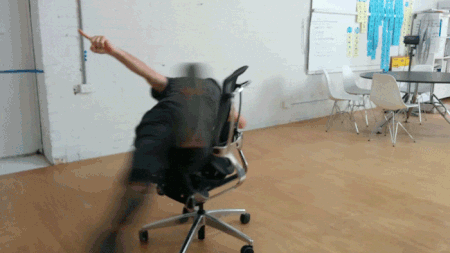
First, you go into the mode of test and iterate quickly. You try different copy angles addressing more pain points. You take a closer look at how your customers are talking about your product or competitors’ products. Next you rework your messaging and hooks.
Ok, that’s not it. So instead you go down the UX and CRO optimization rabbit hole, tweak down, cross and upsells, reemphasize retention efforts, applying the newest strategy that others have seen success with, restructuring the account…the list goes on.
I am in no way negating these tactics. In fact, improving on these is super important for any e-commerce brand when sales are booming or slowing down. But even if you do them right they might not improve new customer acquisition cost.
What could you be missing?
What am I getting at here? It’s simple.
If you don’t understand the sales cycle seasonality of your products, market trends and competitors entering your space you might be trying to fix the wrong problems.
Your space might be blowing up. You see a ton of potential. Google trends are showing a massive spike. Large brands are jumping on the bandwagon. But are you asking the right questions?
For example:
At what rate are competitors entering the space? Even more so at what rate are established brands with exponentially bigger budgets entering this category driving up advertising cost and capturing market share?
What about seasonality? Yes, there is such a thing as seasonality, not a new concept. It will definitely affect sales volume and purchase intent. Categorical seasonality will also affect your marketing efficiency.
What is the market trend? Was this a hyped category that has now been replaced by the next big thing or is the variability due only to seasonality or both?
Are you selling in the essential or non-essential category? How is the overall market doing? What is the consumer purchase power?
If you are entering a new space it can be hard to quantify or predict some of these trends. You can, however, (with some common sense and logic) look at trends in your category to directionally understand cyclical trends. If you are not in a new market Google Trends can be a simple and quick way to get a better understanding.
Let’s look at an example:
Take Keto. Keto is a health and fitness product. The big season for health and fitness products is Q1.
Everyone is ready and excited to follow their new year’s resolution.
Look at the Fitness topic for the past 5 years. There is a consistent spike every January when the interest peaks. [Ignore the COVID anomalie]
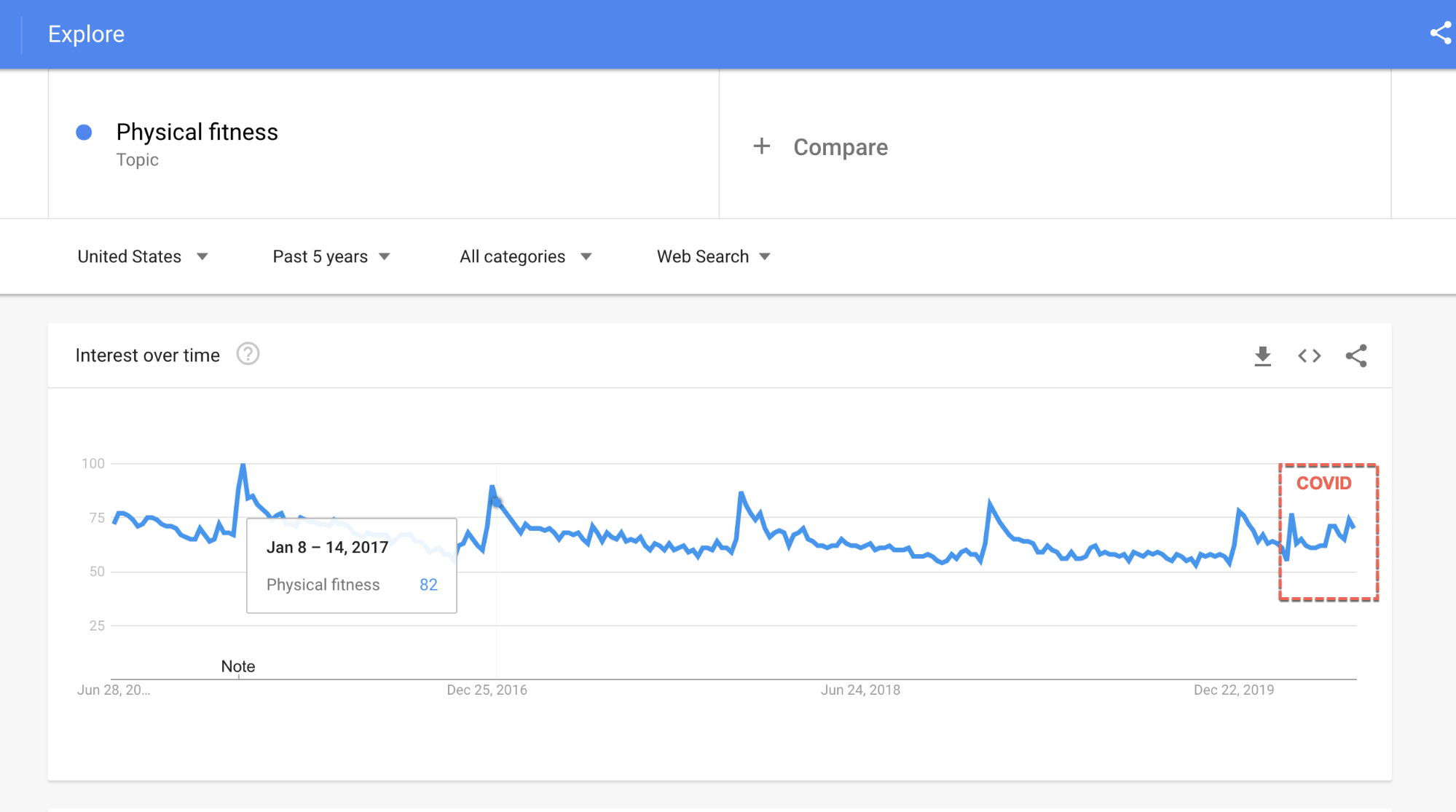
Now let’s take a look at Keto, a newer category over the past 5 years. You can see it was on a steady incline with a massive boost in January of 2019.
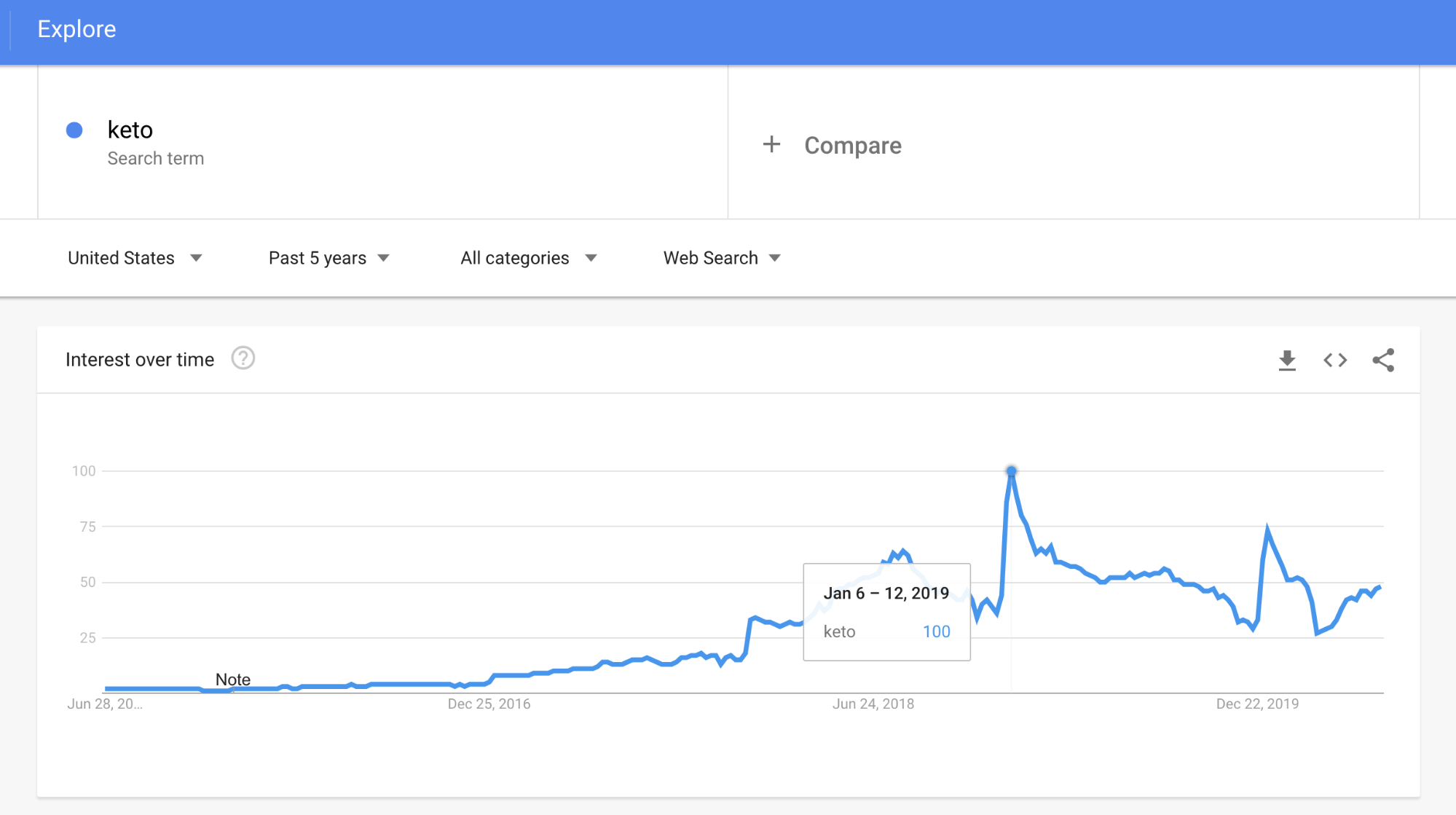
If you follow the trend you can see a decline with a large drop in Q4 and a smaller resurgence in Q1 of 2020. What happened here?
1. Interest for Keto on a slow and steady rise
2. A mainstream adoption was predictable. The timing of when this would happen was not.
3. Mainstream media hype
4. Decline that correlates with fitness category and the hype is wearing off
5. Makes a smaller comeback in Q1 in line with the fitness category
Now keep in mind that if you were already an established brand prior to that 2019 spike you were in a prime position to reap the benefits.
However, with mainstream adoption comes the fact that established brands are going to want to play. As they push themselves into the space it becomes more competitive and expensive. So, although the following Q1 shows substantial potential, you have to fight harder to capture your market share.
So why am I saying all of this? These are not new pieces of information. How can you execute taking the above into consideration?
The answer is taking a cycled marketing approach.
What is the Cyclical Approach to the Sales Cycle?
The cyclical approach to advertising is figuring out how to leverage market variability to your advantage. This can be done by only playing in the space, Sales Cycle or Season that gives you the best results.
Let’s break this into two buckets. The one you can’t and can control.
Can’t Control
Seasons can vary by category, purchase behavior and hype. Market anomalies and consumer purchase power take on a life of their own. All of these are practically out of your control.
Can Control
Sales
Product launches
Predictable seasons
Let’s take a closer look at the Sales Cycle, Product Launch Cycle, Product Refresh Cycle and the Seasonal Cycle.
How can we leverage each one of these to maximize results when supporting and boosting them with Facebook Ads?
Sales Cycle
You have to be careful with the frequency of sales. Too many can erode your brand and make customers immune to sales. In addition having too many sales can have customers only purchasing when you do have a sale hurting your profit margins.
However, leveraging sales can be a valuable way to encourage repeat purchases, increasing LTV during the slow season and even attracting new purchasers.
A scheduled sales calendar is a great way to keep revenue flowing especially during the slower season.
Product Launch Cycle
Product launches on the other hand are a great way to mix up sales. Adding a discount for a new product doesn’t really come across as a sale. New product launches are also great for creating hype and excitement. New products launches similar to sales can increase customer LTV and generate new customers.
Naturally a lot more work goes into creating new products so the frequency of these are not going to hit the frequency of sales.
Product launches can work well in the slower season but can also be super effective for quick scaling in a busy quarter.
Product Refresh Cycle
As a third option you can always have a product refresh. For lack of a better term the 2.0 of your last product. This can be hyped up and pushed with a discount.
Seasonal Cycles
Seasonality is important to keep in mind for evergreen ads. Evergreen ads are defined as ads that run all year round.
I am not saying don’t rotate in new creative for a full 12 months. Please don’t do that. Even the best creative will eventually hit ad fatigue. I mean don’t you want a break every once in a while?
Rather, what I am saying is that seasons affect the effectiveness and efficiency of your ads. Know when your advertisement will be cost effective and when it won’t be.
In our example above it looks like Jan – March should be all in on paid ads. Less reliance on ads for Q2 – Q4 and more reliance on building LTV via product launches and sales with a big push again in Q1.
Conclusion
Sometimes even the best media buyers will hit a brick wall and explaining what is going on looks something like this:

However, taking a step back and understanding the maturity of the space and the brand can help you make smarter calculated decisions to help build and grow a stronger brand.
What challenges have you faced running Facebook Ads for clients with seasonal variability?
AUTHOR BIO:

With over a decade of digital marketing experience, Gabriel excels in search, display, and social advertising across various industries. He specializes in performance media and data-driven storytelling, building custom digital ecosystems that enhance user experiences across both paid and owned channels. Connect with Gabriel on LinkedIn or explore more of his articles here.
Leave a comment